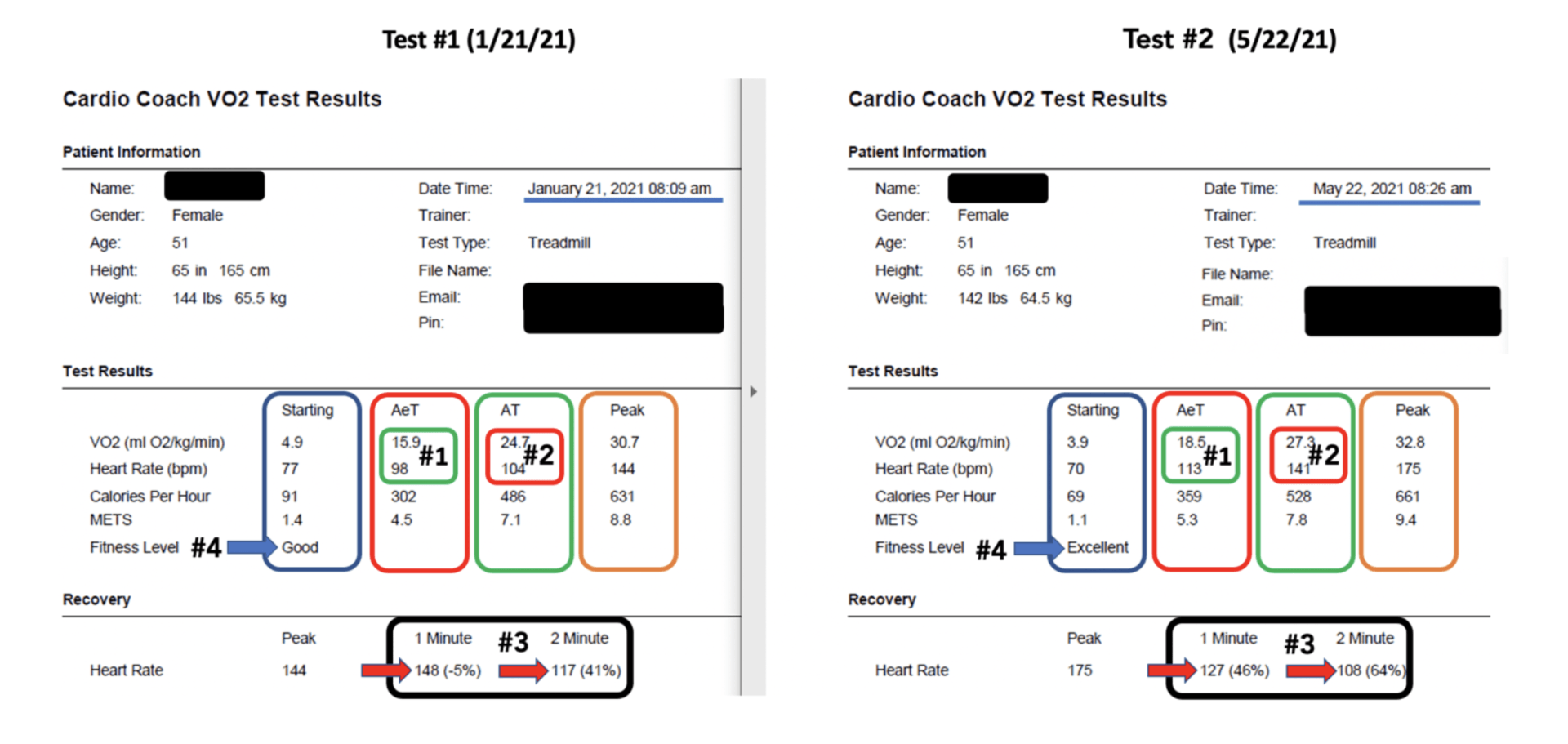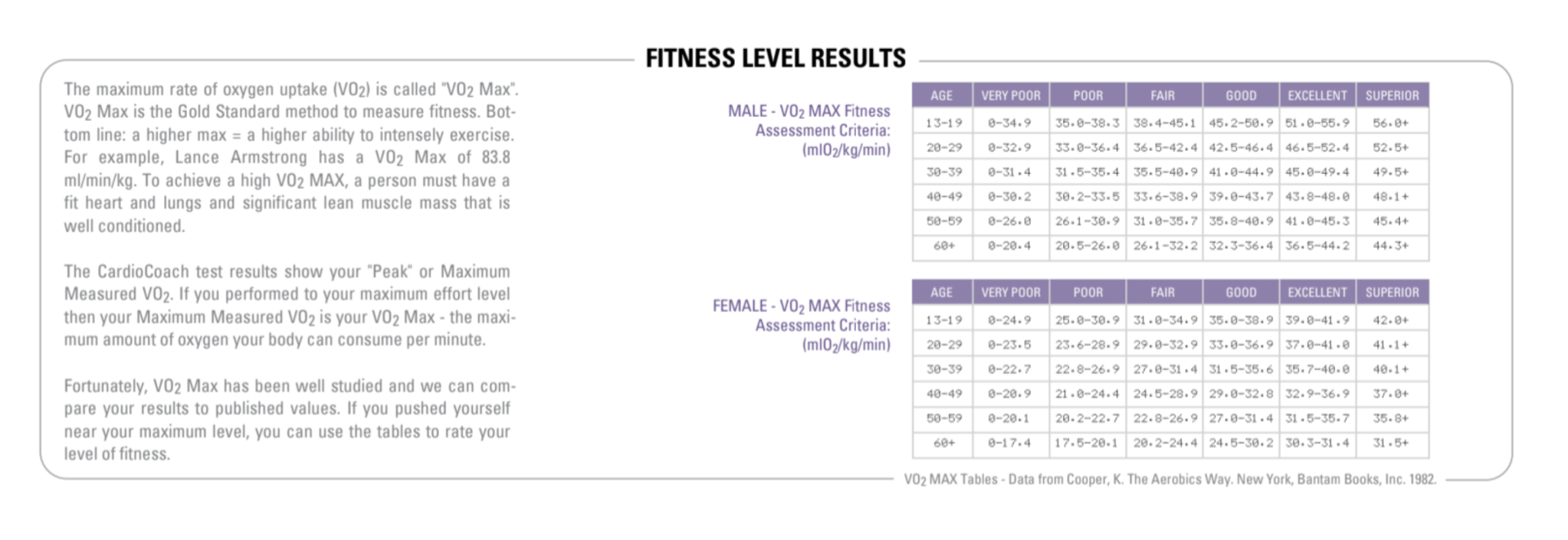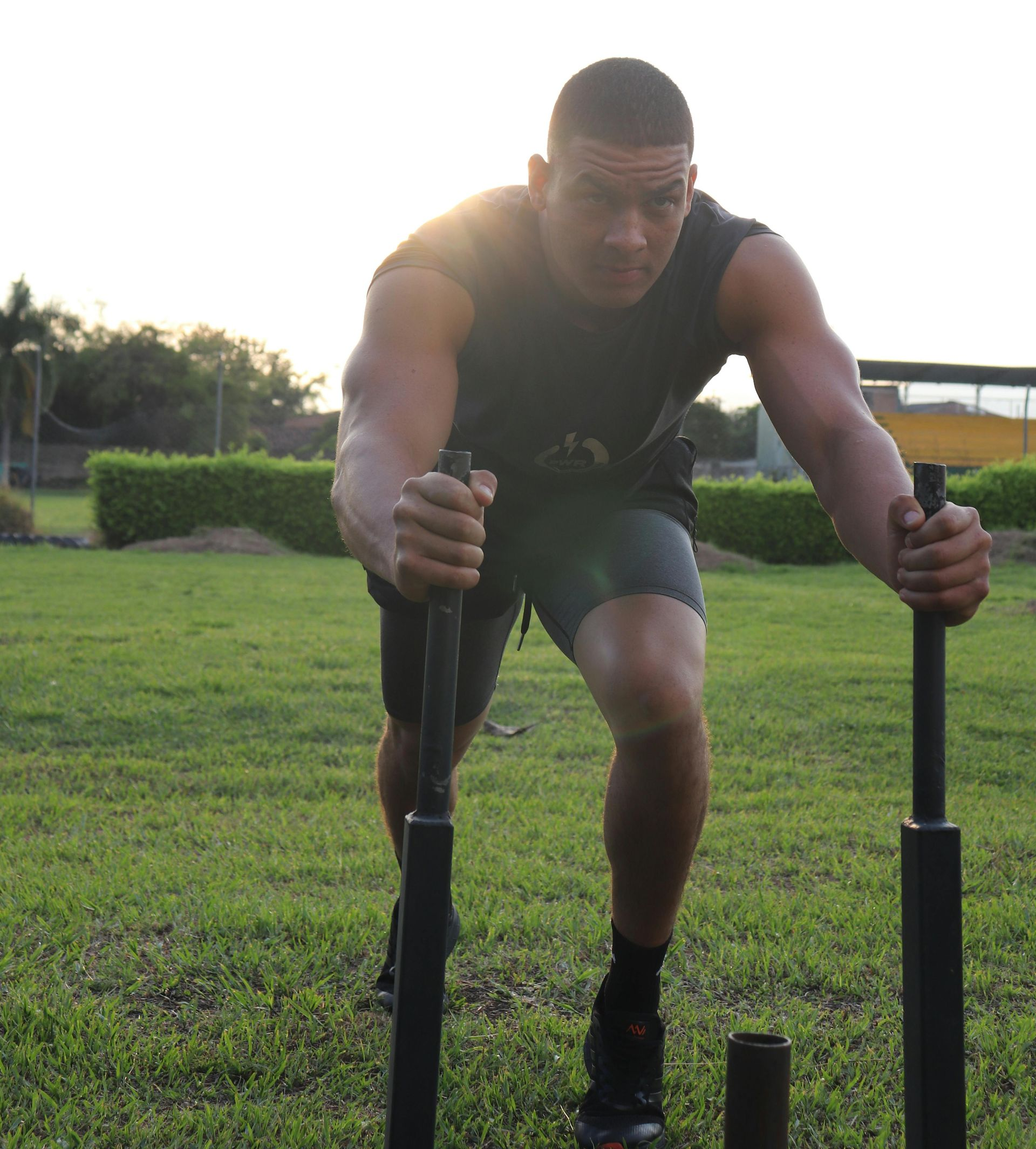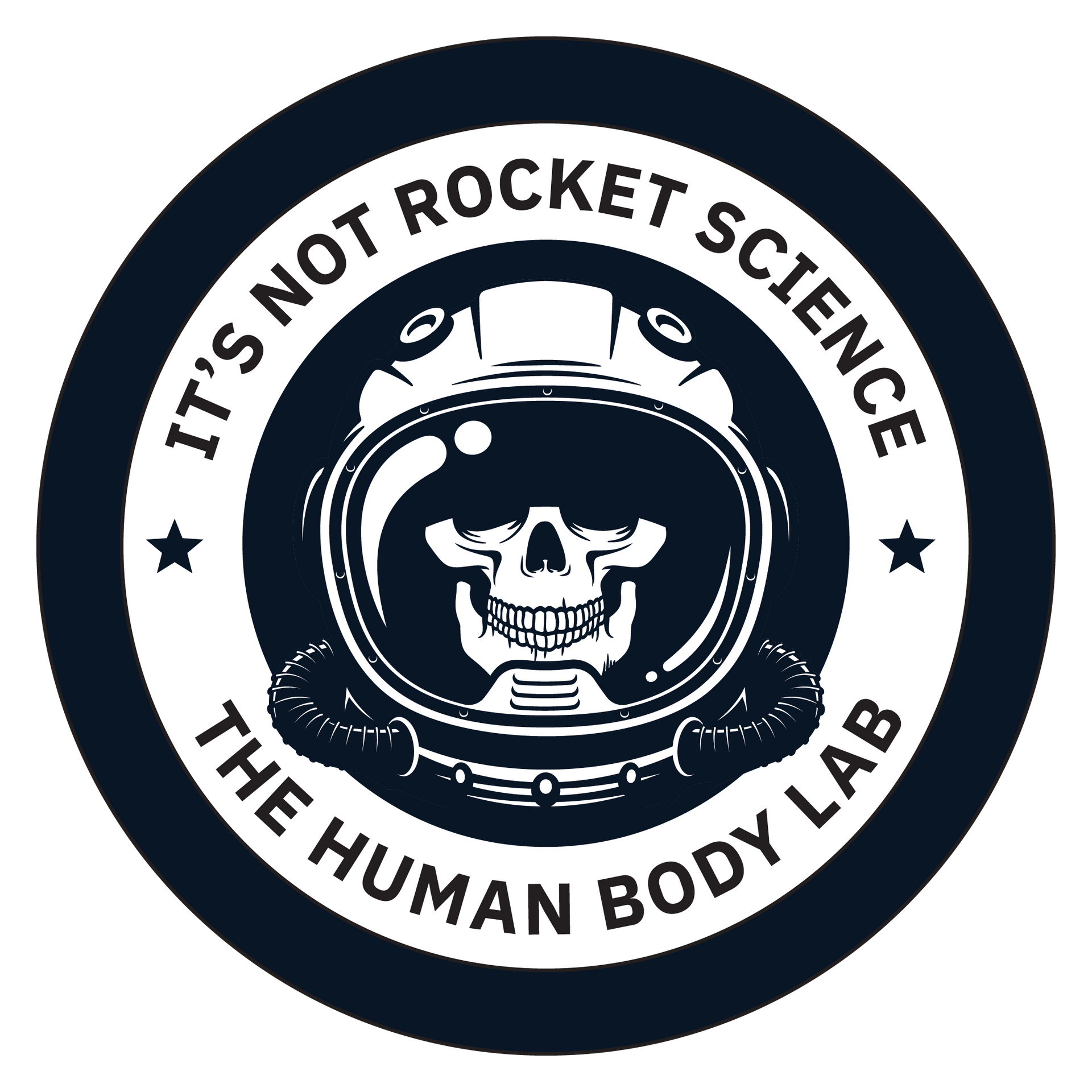Why VO2MAX testing is for everyone
Introduction
Most people do not grasp the simplicity and the benefits of VO2max testing for both performance and for general fitness. Mostly since the vast majority of people have no idea what VO2Max testing is or how to implement it into their exercise/training plan. Fortunately with some knowledge or a good coach, the data can be a turning point in a person’s plan.
Real World Measures
Below is a comparison of a 51 year old female that followed a 12 week training program. The athlete had been exercising regularly prior to the first test, but without a dedicated or organized plan. During the 12 weeks, the athlete followed a dedicated training plan that focused on increasing her lactate threshold along with the overall fitness level. I will continue to refer to the results of this program throughout the article.

Aerobic Threshold (AeT)
During a VO2Max test there are two important points that are measured. One point is called the aerobic threshold (AeT). This is the point when a person starts to burn carbohydrates as the predominant fuel source which causes a person to use more oxygen and produce more carbon dioxide. Because of this, a person will begin to breathe more frequently and deeply. Below the AeT, a person is able to exercise hours with minimal or no fueling.
Comparing test #1 to test #2 the athletes AeT shifted up 15 beats in only 12 weeks of training. This is marked as #1 in the above comparison chart. Being a competitive athlete, a heart rate of 98 is well below any level of competition or training she would perform. Even though a shift of 15 beats may not seem like a huge change, in terms of fueling and the perception of effort, it is pretty significant.
For a general fitness client, the increase in AeT represents the body’s ability to better burn fat stores and decrease the reliance on stored or ingested sugars.
Anaerobic Threshold (AT) / Lactate Threshold (LT)
While the aerobic threshold is important, the most important factor in terms of training and exercise is the anaerobic or lactate threshold. This is the point where the exercise intensity is greater than a person can easily handle. Anaerobic threshold (AT) or indirectly lactate threshold (LT) is where a person is exercising at an intensity higher than their body can produce energy aerobically. The consequence of this is a buildup of an acidic environment (lactic acid) in the muscles and blood stream. This build up decreases the body’s ability to maintain effort and quickly moves a person into the pain cave. This is why a person’s AT is often my priority when programming people.
Comparing test #1 to Test #2 (point #2), there is a significant increase in her lactate threshold of 37 BPM. Raising the athletes LT will allow the athlete to compete at a faster pace for a longer period of time.
For the general fitness client, an increase in AT/LT demonstrates a person’s ability to maintain moderately high intensity work for a sustained period of time. This will improve cardiovascular function, insulin sensitivity and increased ability to burn calories for the same perceived effort.
Fitness Level & Heart Rate Recovery (HRR)
The VO2Max test results also will quantify a person’s fitness level. This is measured using two different methods. First is a person’s heart rate recovery (HRR). HRR is simply the difference between your post-workout and your pre-workout heart rate. For example, if a person started with a 100 BPM and finished with 200 BPM, the difference would be 100 BPM. It is well established that people with a recovery heart rate below 12 beats in the first minute (1) and less than a 50% decrease in the first two minutes have a low fitness level and increased chance of metabolic and cardiovascular diseases. Referring to #3 of the chart, the change in HRR was quite significant for both minute 1 and minute 2 during recovery. Her one minute recovery went from a 5% increase (+4 BPM) to 46% decrease (-48 BPM). Objectively speaking, her fitness level skyrocketed over the 12 week training block.
While HRR is one method of measuring a person’s fitness level, it focuses more on cardiovascular disease risk, whereas VO2Max measures a person’s cardiovascular fitness and the ability to maintain a given exercise intensity. The lower the VO2 score, the slower you must go. Referring to #4 in the chart, the athlete increased their VO2 from 30.7 to 32.8 mL/(kg·min) or her fitness level increased from good to excellent.
What is VO2Max?
VO2Max is a simple test, it just requires some sophisticated equipment and a person capable of interpreting the results. The athlete/client simply performs exercise of increasing intensity on the equipment of their choice. This is commonly done on a treadmill or bike, but can also be done on a rower or even in the pool. Heck, theoretically, you could even just do burpees. During the test the amount of oxygen used during a given level of effort is measured until the person is no longer able to consume any more oxygen. This is called the VO2Max.
VO2Max is a very important measurement for fitness clients as well as athletes. There is a direct correlation to a person’s risk of cardiovascular disease and death. the most fit men and women had 43% and 53% lower risk for all-cause mortality, and 47% and 70% lower risk of CVD mortality, respectively (2).
The chart below provides the VO2Max ranges for different fitness levels.











